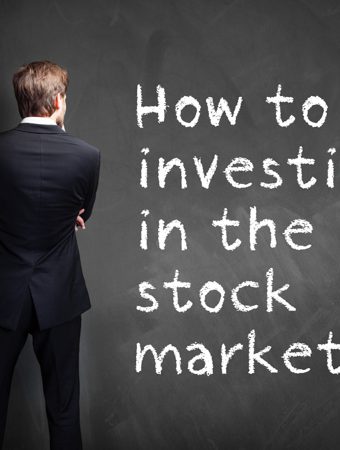This is post #24 from the 30 Day Personal Finance Challenge: Boost Your Financial Health with a Daily Tip!
Now that you have opened a brokerage account and you the stock market lingo it’s time to choose your investment style. Gaining a basic understanding of the major investment styles is one of the fastest ways to make sense of the thousands of investments available in the market today.
Investment Styles
No strategy
Investors who lack a focused trading strategy and trade on emotion and the suggestions of others, including friends, family, and financial gurus are called sheep. This type of investor often makes rash investments without first determining whether these decisions are financially viable.
Sheep-like investors are often the last to get in on a major market move. They base their investments on what is being talked about the most. For example the tech boom of the late ’90s.
Top-down vs bottom-up investing
Top-down investing strategies involve choosing assets based on a big theme. For example, if an investor anticipates that the economy will grow sharply, they might buy stocks across the board. Or they might just buy stocks in particular economic sectors, such as industrial and high technology, which tend to outperform when the economy is strong.
Bottom-up investors choose stocks based on the strength of an individual company. This is regardless of what’s happening in the economy as a whole or the sector in which that company lies. Here thorough research on an individual company is needed.
Active vs Passive
The advantage of passive strategies like buy and hold and passive indexing are the low transaction costs. Investors don’t believe it is possible to time the market.
Active strategies such as momentum trading are an attempt to outperform benchmark indexes. Investors believe they have better than average skills.
Indexing
Indexing is a form of passive investing. Indexing is where an investor buys a small proportion of all the shares in a market index such as the S&P 500, or more likely, an index mutual fund or an exchange-traded fund (ETF). This can be either a passive strategy if held for long periods or an active strategy if the index is used to enter and exit the market quickly.
The primary advantage of such a strategy is the lower management expense ratio on an index fund.
Momentum trading
The idea behind this approach is that investments that have been doing well in the past and have gathered “momentum” are likely to continue doing well.
Value vs Growth
Value investing strategy looks at the intrinsic value of a company based on the company yearly and quarterly reports. Value investors seek stocks of companies that they believe are undervalued. They buy low, sell high.
Growth investment strategy looks at the growth potential of a company. When a company that has expected earnings growth that is higher than companies in the same industry or the market as a whole, it will attract the growth investors who seek to maximize their capital gain. They buy when things are good and hope that they remain good.
Buy and hold
This strategy involves buying company shares or funds and hold them for a long period. It is a long-term investment strategy, based on the concept that in the long run equity markets give a good rate of return despite periods of volatility or decline.
This viewpoint also holds that market timing, that one can enter the market on the lows and sell on the highs, does not work or does not work for small investors, so it is better to simply buy and hold.
Income/Dividend investing
This strategy involves investing in stocks with a strong record of earnings and dividends. Well-established dividend-paying companies will aim to increase their dividend payment each year. Dividend aristocrats are those who make an increase for 25 consecutive years. Investors who reinvest the dividends are able to benefit from the compounding of their investment over the longer term.
The average dividend of an S&P 500 stock is 2-3% of the share price. An income investor would look for a dividend of at least 5-6% of the share price.
Dollar-cost averaging
Dollar-cost averaging is a straightforward, traditional investing methodology. Fundamental to the strategy is a commitment to investing a fixed dollar amount each month. Depending on an investor’s investment objectives and risk profile, the monthly contributions can be invested in a mixed portfolio of mutual funds, exchange-traded funds (ETFs) or even individual stocks.
Each month, the fixed amount buys shares at the then-current prices. As share prices decline, the fixed amount buys a higher number of shares. When prices increase, the fixed amount buys fewer shares.
The real value of dollar-cost averaging is that investors don’t need to worry about investing at the top of the market or trying to determine when to get in or out of the market.
Smaller companies
Historically medium-sized companies have outperformed large-cap companies on the stock market. Smaller companies again have had even higher returns. The very best returns by market cap size historically are from micro-cap companies.
Investors buy companies based on their small market capsize. One of the greatest investors Warren Buffet made money in small companies early in his career combining it with value investing. He bought small companies with low P/E (price/earnings) ratios and high assets to market cap.
Contrarian investment
A contrarian investment strategy consists of selecting good companies in a time of down market and buying a lot of shares of that company in order to make a long-term profit. Contrarian investor chooses assets that are out of favour and undervalued. They determine the market’s consensus about a company or sector and then bet against it.
The risk, of course, is that the consensus is right, which results in wrong bets and losses for a contrarian investor.
Conclusion
Your individual investment style can be a combination of two or more styles. The most important thing to consider is your risk tolerance so that you can sleep well at night and you are on a good way to financial independence.
********************
Disclaimer:
I am not an investment consultant and all the opinions I share are from my personal experience. I learn by doing, and I try to keep the risk at a minimum.
Before taking any action, get advice from a certified financial planner, asset manager or/and investment broker.
********************
Photo by Brooke Lark on Unsplash
Header made with Canva



